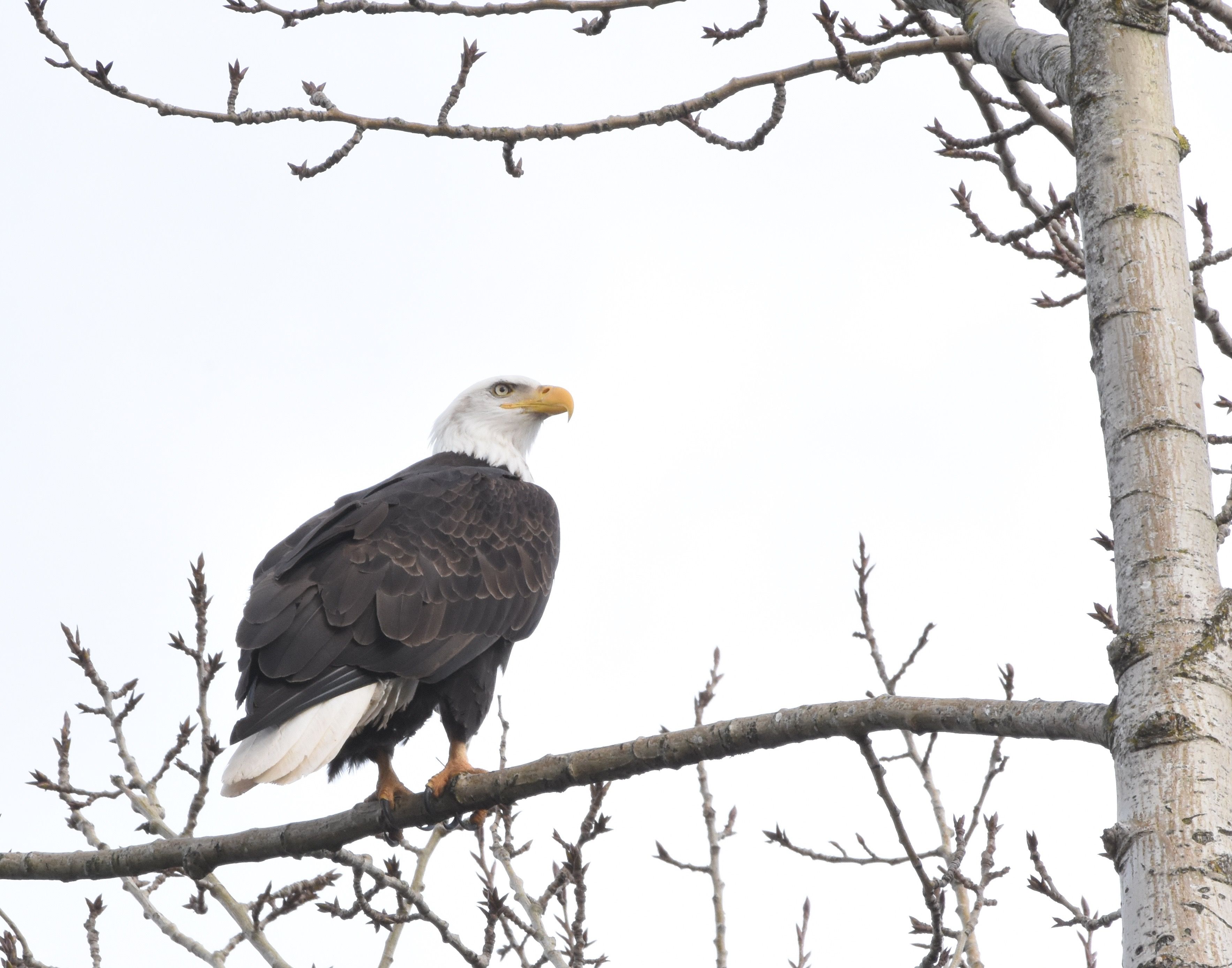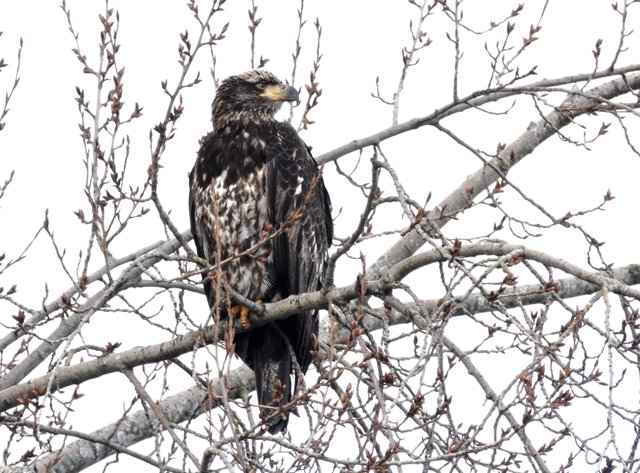
In the mid 20th Century the national bird of the United States of America, was endangered in large part due to the deleterious effects of the pesticide DDT on breeding success. DDT was widely used throughout the world for control of various crop and forestry pests, and was accumulated into animals that ate the sprayed foliage. It was concentrated in larger animals as they moved up the food chain, and birds like Bald eagles, Peregrine falcons, and Brown pelicans had severe population declines. Bald eagles were listed as endangered, and they became quite rare throughout much of their range. Since the ban on DDT use the population of all three of these species has made remarkable recoveries, so that now peregrines are breeding in many historic and some new areas, and Bald eagles just seem like they are everywhere.
Today at a local birding hotspot, the Gog-li-hi-ti wetland mitigation in Tacoma, my brother-in-law and I saw at least 3 eagles. Two adults and one young bird were perched in trees, and watching over us as we birded the wetland.
Bald eagles are a magnificent bird. They vary considerably in size, generally larger the farther north they breed. The largest Bald eagles can be up to 6.3 kg in weight and 266cm wingspan in northern Alaska, and the smallest in the SE and SW United States can be only 3 kg with a 168 cm wingspan. (source BNA Online).
As with most raptors the females are larger than the males, with up to a 25% size difference between sexes. Bald eagles are opportunistic feeders, relying on carrion of fish, birds and mammals when it is available in safe places to eat, but are accomplished hunters of a wide variety of prey. Aquatic prey, especially fish, but also ducks, gulls and even Great blue herons are utilized along with reptiles, mammals and crustaceans. In Alaska they frequent dumps for carrion.
Like many large birds, Bald eagles do not achieve their unmistakable adult plumage with pure white head and tail and black body, until abut 5 1/2 years of age. In juvenile plumage they are variably black with white feathers interspersed. They are sometimes confused with Golden eagles in non-adult plumage. A good plumage field mark is that in fGolden eagles in flight subadults the white in the wings is limited to the flight feathers, but in Bald eagles the white can be in various places throughout the flight feathers and the wing coverts. Here is a photo of the perched immature Bald eagle we saw at Gog-li-hi-ti today.

It's really nice to see Bald eagles along with other fish eating birds high on the food chain making such a great recovery.
Good birding.